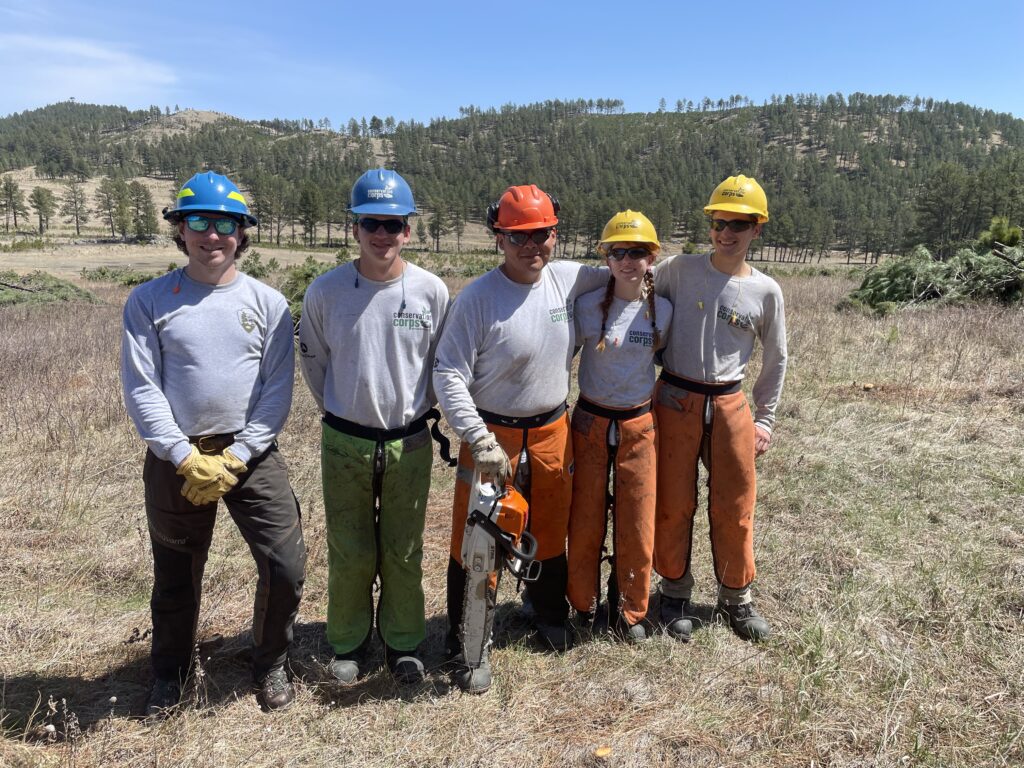The Bison at Wind Cave National Park
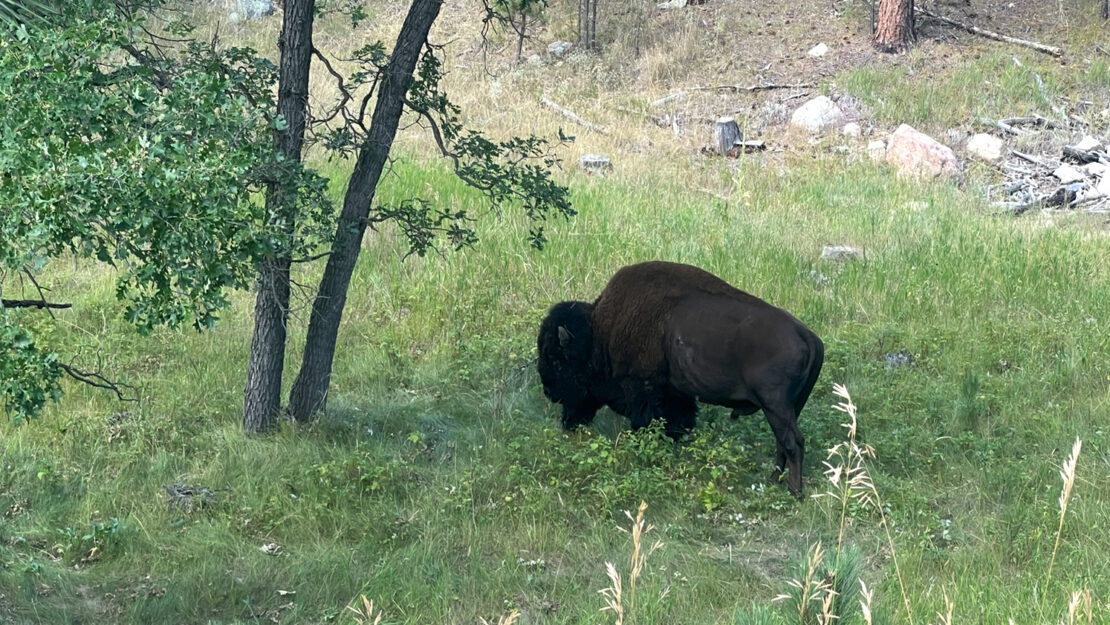
By Will Gonzales-Tapetillo, Iowa Field Specialist / AmeriCorps Member
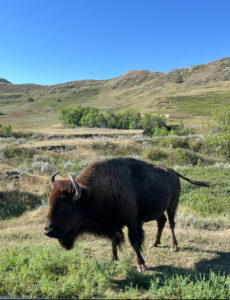 Our spike week began on the 21st of April, this time bringing us to Wind Cave National Park, located in Custer County South Dakota. It was a welcome change of pace, and a fair distance from the last park we served which was Pea Ridge National Military Park down in Arkansas. The work in a general sense didn’t change; on our last few spikes in Arkansas, we were tasked with felling and piling red cedar trees so that the historic oaks could continue to thrive as they did during the Battle of Pea Ridge. This time, we were clearing out ponderosa pine trees in a section of the park that had not been burned since its acquisition. The overall goal this week has been to restore the prairie back, the sole culprit for the woody encroachment were our evergreen friends. Granted, the trees we targeted weren’t as menacing in stature so much as the sheer scale of the acreage of the project site. We were asked to clear out as many of the human-sized pines as our time and endurance would allow.
Our spike week began on the 21st of April, this time bringing us to Wind Cave National Park, located in Custer County South Dakota. It was a welcome change of pace, and a fair distance from the last park we served which was Pea Ridge National Military Park down in Arkansas. The work in a general sense didn’t change; on our last few spikes in Arkansas, we were tasked with felling and piling red cedar trees so that the historic oaks could continue to thrive as they did during the Battle of Pea Ridge. This time, we were clearing out ponderosa pine trees in a section of the park that had not been burned since its acquisition. The overall goal this week has been to restore the prairie back, the sole culprit for the woody encroachment were our evergreen friends. Granted, the trees we targeted weren’t as menacing in stature so much as the sheer scale of the acreage of the project site. We were asked to clear out as many of the human-sized pines as our time and endurance would allow.
Let me tell you; the NPS CCMI crew based out Des Moines, Iowa took on the challenge head on. A full day of chainsawing and swamping is enough to wear out a person for the day. Factor in an elevation change of 4,631 feet, curious bison wandering close to see what we were up to, and a solid three day stretch of grueling freezing rain followed by a nearly 80-degree day to boot made for a week where we could test our mettle. In spite of the perils, we were undaunted by our mission.
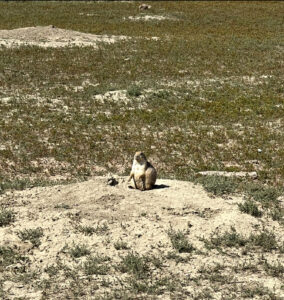 What could drive us to endure such inconveniences? It certainly wasn’t the fact that our boots became ever so slightly damper with each passing morning, or our backs reminding us of our achievements each afternoon. Logan, Lucas, and Abby of the NPS Des Moines crew and I certainly don’t want to see the use of our labor go to waste or to serve an arbitrary goal. Such principles provoke a simple question with a non-simple answer; what makes what we do here at Wind Cave special?
What could drive us to endure such inconveniences? It certainly wasn’t the fact that our boots became ever so slightly damper with each passing morning, or our backs reminding us of our achievements each afternoon. Logan, Lucas, and Abby of the NPS Des Moines crew and I certainly don’t want to see the use of our labor go to waste or to serve an arbitrary goal. Such principles provoke a simple question with a non-simple answer; what makes what we do here at Wind Cave special?
Prior to the “discovery” of the cave by two settler brothers by the names of Tom and Jesse Bingham in 1881, the Lakota Nation and other indigenous groups considered Wind Cave to be a sacred place. The cave goes by many names in the Lakota language, some of the most common being Maka Oniye, meaning “the breathing earth”. This place is aptly named due to the cave’s natural entrance, being only ten inches wide and fourteen inches long, creating a pressure zone where wind would blow in and out of. In the year 1903, President Theodore Roosevelt signed Wind Cave National Park into existence, becoming the 7th oldest national park.
The story of the Wind Cave Emergence plays a crucial role in the grander Creation Story of the Lakota. Traditionally passed down through generations by way of oratory history, it tells of how the natural entrance was seen as a passageway from the spirit world into our world. In some iterations of the Story, it’s said two trickster spirits had been banished to the surface world. Her name is Anog-Ite, who was a woman with two faces, and his name is Iktomi who was a trickster spirit. The surface world had everything in it with the exception of two beings; the bison and the people. The two spirits constantly bickered with each other, until they got bored of their fight and schemed to trick the people in the Spirit World. Working together, they led a wolf which was carrying many goods such as dried meats, berries, cloths and tools down the portal and lured some of the people out with a newfound want for the world the Creator said was not ready for them.
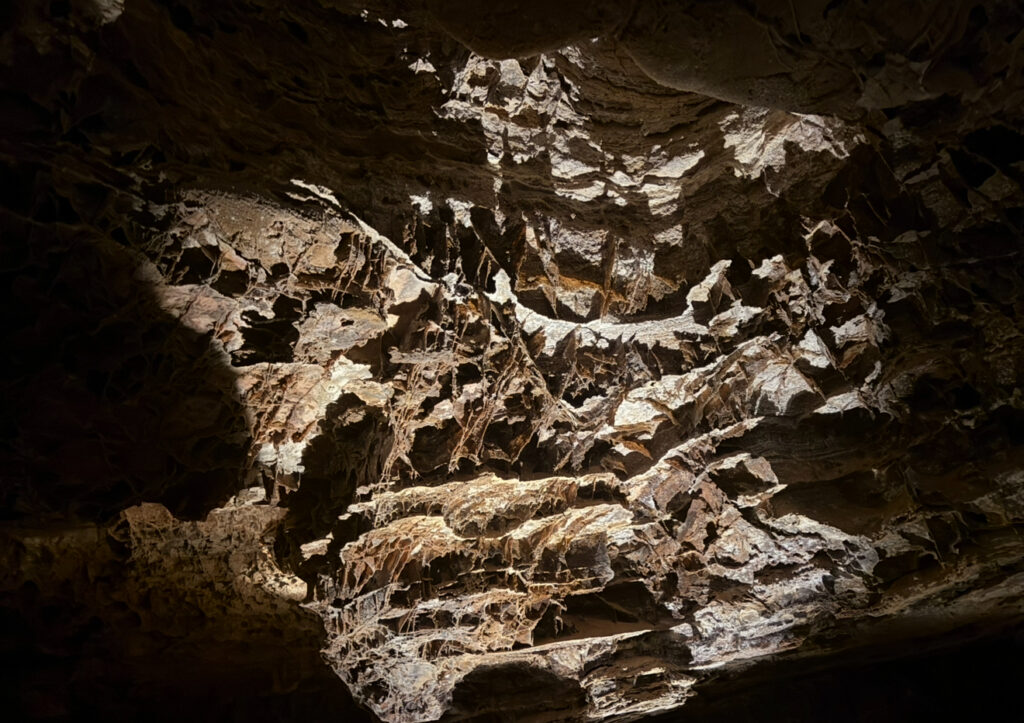
 It was summertime when they entered the world, and their first impression was one of bliss. Using her other face, Anog-Ite taught the people to sustain themselves in this world. However, the people did not yet know of the changing of seasons in this world and they soon suffered in their hubris. Winter came, people starved and became sick, so they cried out to the great Creator to help them. The Creator asked why they were here, as the world wasn’t ready for their arrival. The Creator agreed to help the people but also judged them worthy of punishment. The people grew a massive hide of hair, horns on their head, and their hands and feet replaced with hooves and became the bison we know today.
It was summertime when they entered the world, and their first impression was one of bliss. Using her other face, Anog-Ite taught the people to sustain themselves in this world. However, the people did not yet know of the changing of seasons in this world and they soon suffered in their hubris. Winter came, people starved and became sick, so they cried out to the great Creator to help them. The Creator asked why they were here, as the world wasn’t ready for their arrival. The Creator agreed to help the people but also judged them worthy of punishment. The people grew a massive hide of hair, horns on their head, and their hands and feet replaced with hooves and became the bison we know today.
Earlier this week, our project host facilitated a tour of Wind Cave for us with the ranger for that day. We had the extremely fortunate privilege of getting an in-depth education in the history of the park, from anthropological history to cultural to biological. Abby, Lucas, Logan and I got to see both worlds that make Wind Cave so special. Knowing what the cave below means to the first people who knew of it and knowing what the work we do means to the plains above, the resulting galvanization to persevere through the hard work is one of the many reasons I have so much love in serving our National Parks in the name of land stewardship. Even knowing something as simple as the bison having a new place to munch on some grass makes it worth it in the end for me.
